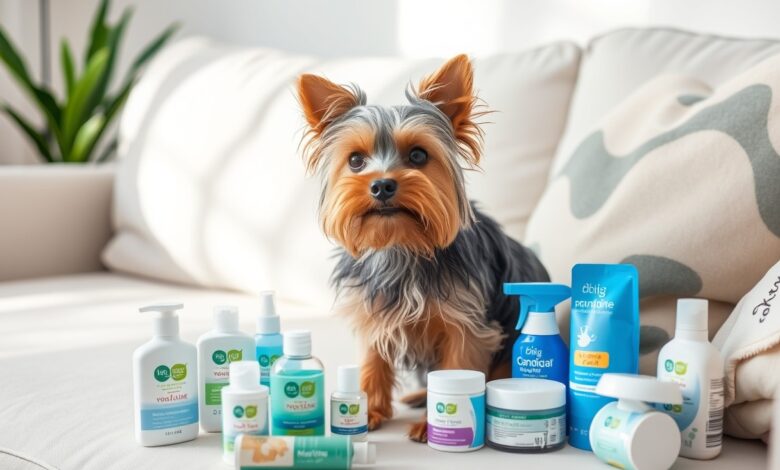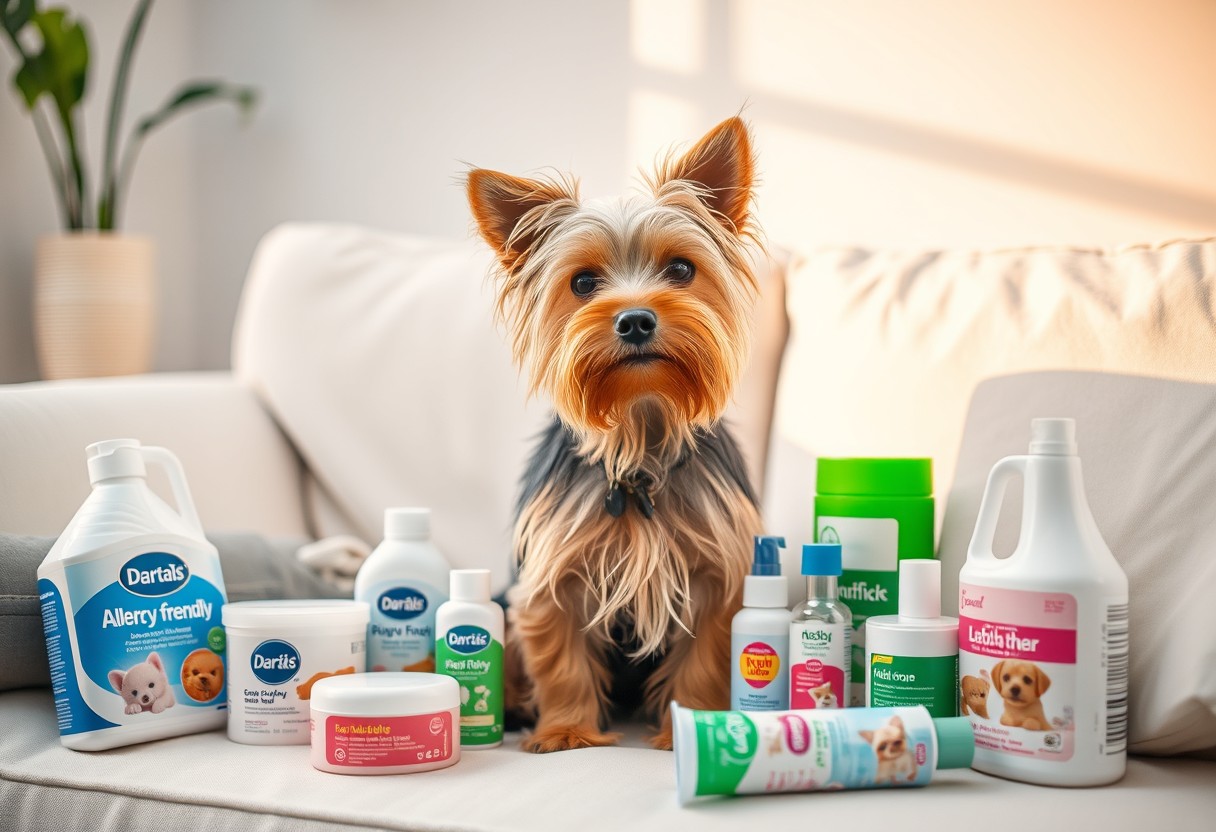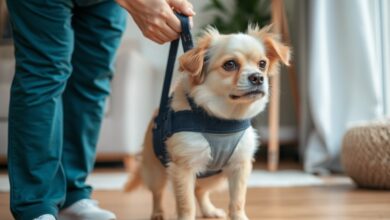Are Yorkshire Terriers Hypoallergenic? Allergy Guide

There’s a common curiosity among pet lovers regarding whether Yorkshire Terriers are truly hypoallergenic. If you or someone in your household suffers from allergies, it’s necessary to understand the relationship between Yorkies and allergens. With their unique coat and grooming needs, you’ll discover how these delightful dogs can potentially fit into your lifestyle while minimizing allergy risks. In this guide, you’ll gain valuable insights into Yorkshire Terriers and their suitability for allergy sufferers, helping you make an informed decision for your next furry companion.
Key Takeaways:
- Hypoallergenic Status: Yorkshire Terriers are often considered hypoallergenic due to their low-shedding coat, which may produce fewer allergens compared to some other breeds.
- Individual Reactions: While they are categorized as hypoallergenic, individual reactions to dog allergens can vary, meaning some people may still experience allergies.
- Grooming Importance: Regular grooming and cleaning can help minimize allergens in the home, making it necessary for Yorkie owners to maintain a consistent grooming routine.
Understanding Hypoallergenic Dogs
The term “hypoallergenic” describes dog breeds that are less likely to trigger allergic reactions in sensitive individuals. While no dog is entirely free from allergens, hypoallergenic breeds tend to produce fewer dander, saliva, and urine proteins that can cause allergies. This makes them a popular choice for allergy sufferers who want a furry companion without the accompanying sneezy, itchy symptoms. Understanding hypoallergenic dogs can help you make an informed decision when considering a pet for your household.
Definition of Hypoallergenic
While the term “hypoallergenic” suggests that certain dog breeds are safer for allergy sufferers, it’s important to understand that no dog is completely allergen-free. This term is often used to market breeds that produce less dander or hair, which can help minimize potential allergic reactions.
Common Misconceptions
Common misconceptions surrounding hypoallergenic dogs include the belief that they are entirely safe for allergy sufferers. Many people assume that if a dog is labeled hypoallergenic, they will not cause any allergic reactions. However, this is not entirely accurate.
For instance, hypoallergenic breeds, such as Yorkshire Terriers, can still produce certain allergens that may affect sensitive individuals. Additionally, some people might believe they are immune to allergies if they adopt a hypoallergenic dog, which can lead to disappointment when symptoms arise. It’s also important to note that individual responses to dogs can vary; just because one person has a positive experience with a hypoallergenic breed doesn’t guarantee you will. Understanding these nuances is crucial for making the right choice for your health and lifestyle.
Types of Dogs and Allergies
If you’re considering a dog but have allergies, it’s necessary to understand how different breeds can affect you. Here’s a quick overview:
| Dog Breed Type | Allergy Potential |
|---|---|
| Non-Shedding Breeds | Lower |
| Shedding Breeds | Higher |
| Large Breeds | Varies |
| Small Breeds | Often Lower |
| Mixed Breeds | Depends on Parents |
This information can help you make an informed decision when choosing a pet that best suits your needs.
Non-Shedding Breeds
For those with allergies, non-shedding breeds are often the best option. These dogs produce less dander, which is a primary allergen. Common non-shedding breeds include Poodles, Portuguese Water Dogs, and, of course, Yorkshire Terriers. This characteristic can make it easier for you to find a furry companion that won’t exacerbate your allergies.
The Yorkshire Terrier’s Coat
An important aspect of the Yorkshire Terrier is its unique coat. Their fine, silky hair resembles human hair, making it less likely to trigger allergies compared to traditional dog fur. You may find that regular grooming and consistent cleaning of your home can mitigate allergic reactions while enjoying your Yorkshire’s companionship.
Dogs like the Yorkshire Terrier possess a distinct coat that not only adds to their charm but is also crucial for allergy sufferers. The Yorkshire Terrier’s coat is made of long, flowing hair that sheds minimally, reducing the presence of dander and fur in your environment. However, it’s important to cleanse their coat regularly to keep it free from dirt and allergens. While their coat offers benefits, regular grooming and maintenance are necessary to ensure that your allergies don’t flare up while enjoying your adorable companion.
Factors Influencing Allergies
All dogs, including Yorkshire Terriers, can produce allergens that might trigger your allergies. Various factors can influence the severity of your allergic reactions, such as:
- Your personal genetic predisposition
- The amount of dog dander present in your environment
- Exposure levels to allergens
- Your dog’s age, health, and grooming habits
Perceiving these factors can help you manage your environment and reduce potential allergic reactions.
Allergens Found in Dogs
One of the primary sources of allergens in dogs is dander, which consists of tiny flakes of skin shed by your Yorkshire Terrier. Additionally, saliva and urine can contain allergens that may contribute to your reactions, especially if your dog licks itself or if cleaning accidents occur.
Individual Sensitivities
With your unique all immune system and genetic makeup, you may have varying levels of sensitivity to dog-related allergens. This means that while some people may experience significant allergic reactions, others might only have mild symptoms or none at all.
To effectively manage individual sensitivities, it’s important you recognize that allergic reactions can differ widely among people. For some individuals, even minimal exposure to allergens from your Yorkshire Terrier can trigger severe symptoms. In contrast, you may find that consistent grooming and cleaning can mitigate your own sensitivities, allowing you to enjoy the company of your pet without major discomfort. Ultimately, understanding your personal responses and adjusting your environment can lead to a more harmonious relationship with your furry companion.
Tips for Managing Allergies
Not all allergies can be avoided, but you can manage them effectively. Here are some strategies to help cope with allergies associated with your Yorkie:
- Regularly clean your home to reduce allergens.
- Use air purifiers to keep indoor air fresh.
- Establish a grooming routine for your dog.
- Limit your Yorkshire Terrier’s access to certain areas.
- Consult a veterinarian for allergy treatments.
After adopting these measures, you may see an improvement in your allergy symptoms.
Regular Grooming Techniques
Tips for maintaining a regular grooming schedule for your Yorkshire Terrier include using a soft brush to prevent mats and tangles, bathing them with hypoallergenic shampoos, and keeping their nails trimmed. Regular grooming not only helps manage allergens but also keeps your pet’s coat healthy and beautiful.
Home Environment Adjustments
While allergies can be tricky, making some adjustments in your home can significantly reduce triggers. Create a *clean* and *safe* space for both you and your Yorkshire Terrier by implementing changes.
A common adjustment includes using hardwood floors instead of carpets to reduce pet dander accumulation. Additionally, consider keeping your Yorkie’s bedding in a separate washing area to avoid spreading allergens in your home. You should also frequently wash your dog’s items in hot water to eradicate any allergens. Make sure to keep your home well-ventilated by opening windows or utilizing air purifiers to remove irritants. By setting boundaries, you protect yourself from potentially dangerous allergy flare-ups while ensuring a positive environment for your furry friend.
Step-by-Step Allergy Management
For effective management of allergies related to Yorkshire Terriers, follow these steps:
| Step | Description |
| 1 | Consult with an allergist for personalized testing and recommendations. |
| 2 | Create a designated pet-free zone in your home. |
| 3 | Invest in high-quality air purifiers to reduce allergens. |
| 4 | Regularly groom and bathe your Yorkshire Terrier to minimize dander. |
Initial Allergy Testing
StepbyStep, the first important measure in managing your allergies is to undergo initial allergy testing. This process typically involves skin or blood tests to determine specific allergens, allowing you to understand and address your individual sensitivities. By identifying triggers, you can better plan your approach to living with a Yorkshire Terrier.
Introducing Yorkshire Terriers to the Home
Some important tips to remember when introducing a Yorkshire Terrier into your home include initially keeping them in a confined space and gradually allowing them access to other areas. This controlled exposure can help you monitor your reactions and assess your allergies effectively.
Another crucial aspect to consider is to maintain a consistent cleaning schedule within your home. Regularly vacuum and dust your living spaces, focusing on areas where your Yorkshire Terrier frequents. Additionally, consider using pet-friendly cleansers to minimize any harmful residues. You should also ensure your dog is groomed regularly, which can significantly reduce allergens in your environment. Understanding and implementing these practices will aid in creating a harmonious atmosphere for both you and your furry companion.

Pros and Cons of Owning a Yorkshire Terrier
After considering a Yorkshire Terrier as your potential pet, it’s important to weigh the pros and cons of ownership. This little breed has a host of appealing attributes as well as a few drawbacks that you should be aware of before making your decision.
| Pros | Cons |
| Small size; great for apartments | Potential for health issues |
| Low shedding; hypoallergenic potential | Requires regular grooming |
| Affectionate and loyal companions | Can be yappy or territorial |
| Good with trained children | May require early socialization |
| Long lifespan; 12-15 years | Prone to anxiety if left alone |
| Intelligent and eager to learn | Can be stubborn with training |
| Active and playful | Caloric needs may vary with activity |
| Great travel companions | Need for regular exercise |
Benefits for Allergy Sufferers
There’s a silver lining for allergy sufferers considering a Yorkshire Terrier. Their low-shedding coat can reduce the amount of dander released into your home, making them an excellent choice for individuals prone to allergic reactions. While no dog is entirely free of allergens, Yorkshire Terriers may be among the better options for you.
Potential Challenges
For some owners, the challenges of maintaining a Yorkshire Terrier may feel daunting. While their affectionate nature is a highlight, implementing structured training is crucial to prevent behavioral issues, as they can become yappy or territorial. Additionally, keeping up with a regular grooming schedule requires dedication to avoid matting and maintain their coat health.
It’s important to be aware that Yorkshire Terriers can develop anxiety if left alone for long periods, necessitating you to consider your lifestyle. Their small size often makes them vulnerable to injury from larger pets or rough play. Investing time in early socialization and training can help prevent these challenges, ensuring a smooth relationship with your future companion.
Final Words
On the whole, while Yorkshire Terriers are often considered hypoallergenic due to their low-shedding coats, it’s crucial to remember that no dog breed is completely free of allergens. If you have allergies, it’s crucial to spend time with a Yorkie before committing to ensure they won’t trigger your sensitivities. Regular grooming and cleaning can also help minimize allergic reactions, making them a suitable companion for many allergy sufferers. In the end, knowing your own reactions and taking appropriate precautions will help you enjoy your time with your Yorkshire Terrier.





